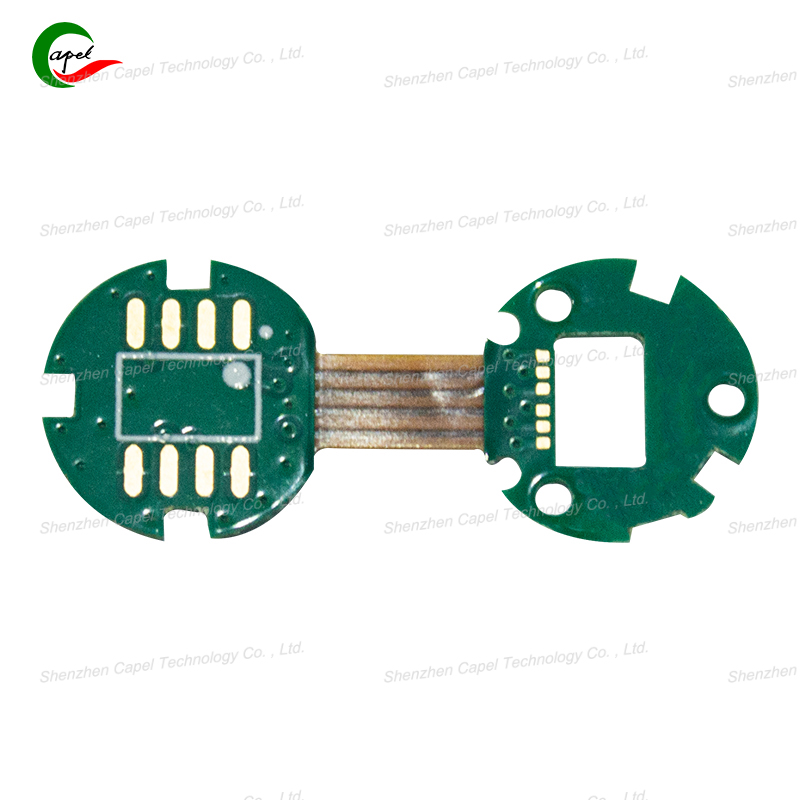Date: 2025-10-16
Working with high-frequency signals in rigid-flex designs presents unique challenges, particularly when it comes to vias. I remember struggling with signal integrity issues in our first 5G module prototype - the vias were creating impedance discontinuities that degraded performance significantly. Through extensive testing and collaboration with our manufacturing partners, we've developed practical approaches that deliver reliable results.
Understanding the Fundamental Challenges
The physics behind via-related signal degradation boils down to two key parasitic elements. Parasitic capacitance forms between the via barrel and surrounding ground planes, while the via barrel itself acts as a small inductor. At gigahertz frequencies, these seemingly minor effects become significant. In one of our RF designs, we measured approximately 0.7pF of parasitic capacitance and 0.8nH of inductance for a standard 0.3mm via - enough to cause noticeable impedance variations.
Practical Via Optimization Strategies
Our approach to via optimization focuses on three key areas:
For via geometry, we've standardized on 0.2-0.3mm diameters for most high-frequency applications. The smaller diameter reduces both parasitic capacitance and inductance. We pair this with slightly thicker copper plating (15-20μm) to minimize resistive losses. The anti-pad size proves equally important - we maintain a 2:1 ratio of anti-pad diameter to via diameter, which has shown excellent results in controlling capacitance.
Ground via implementation has become a standard practice in our designs. We place 2-4 ground vias within 0.4mm of each signal via, creating an effective shielding structure. This approach reduced insertion loss by approximately 20% in our millimeter-wave applications. The key is ensuring these ground vias connect directly to the main ground plane rather than floating or connecting only to local pads.
Special Considerations for Rigid-Flex Transitions
The interface between rigid and flexible sections requires particular attention. We avoid placing vias within 1.5mm of the transition line to minimize the impact of dielectric constant variations. For designs with significant thickness differences between rigid and flexible sections, we use stepped vias that match the local substrate thickness.
In flexible areas, we reinforce vias with additional polyimide stiffeners. This prevents mechanical stress from altering the via geometry during repeated bending. We learned this lesson the hard way when a batch of wearable devices showed degraded RF performance after just a few months of use.
Common Implementation Pitfalls
Through trial and error, we've identified several common mistakes:
Using the same via dimensions across different frequency ranges often leads to suboptimal performance. We now have separate via libraries for different frequency bands.
Neglecting anti-pad optimization is another frequent issue. We once had a design where reducing the anti-pad size by just 0.2mm increased parasitic capacitance by nearly 50%.
Improper ground via implementation can be worse than having no ground vias at all. We ensure all ground vias have low-impedance connections to the main ground plane.
Validation and Testing
Our process includes rigorous testing using vector network analyzers to characterize via performance across the operating frequency range. We've found that simulation alone isn't sufficient - real-world validation often reveals issues that models miss.
The most successful designs emerge from close collaboration between design and manufacturing teams. Understanding process capabilities and limitations helps us create designs that are both electrically sound and manufacturable.
By implementing these strategies, we've consistently achieved impedance variations of less than 5% and insertion losses that meet the demanding requirements of modern high-frequency applications. The approach has proven reliable across 5G modules, automotive radar systems, and high-speed communication equipment.
related link:
Capel manufacturing PCBs since 2009. Professional technology and high-precision Printed Circuit Boards involved in Medical, IOT, UAV, Aviation, Automotive, Aerospace, Industrial Control, Artificial Intelligence, Consumer Electronics etc..